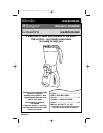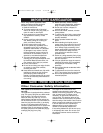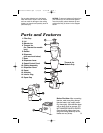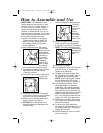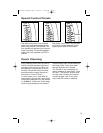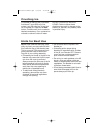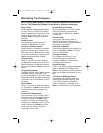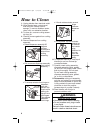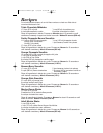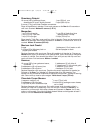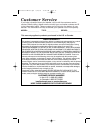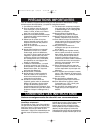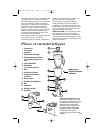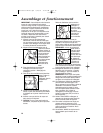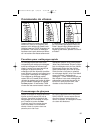
6
Hints for Best Use
NOTE: After extended blending, espe-
cially dry food, you may notice a black
film inside the top of the blender base.
This is a normal, FDA-approved, food-
grade lubricant used to ensure the
long-life of your cutting assembly.
• Processing hot foods or liquids in the
blender may cause hot liquid to spurt
out when the cover is removed.
Always remove the filler cap of the lid
before blending hot foods or liquids.
Keep hands and other exposed skin
away from the cover opening to
reduce risk of possible burns.
• To add foods when blender is
operating, remove filler cap from
container lid and add ingredients
through the opening.
• Do not store food or liquids in the
blender jar.
• If blending action stops during
blending or ingredients stick to sides
of the jar, turn blender OFF. Remove
cover and use a rubber spatula to
push mixture toward blades.
• Do not try to mash potatoes, mix stiff
dough, whip egg whites, grind raw
meat, or extract juices from fruits and
vegetables. The blender is not made
to perform these tasks.
• If food being processed (solid food or
ultra-thick beverages) will not dis-
pense always pour from jar.
Crushing Ice
Fill blender jar half-full with cold water.
Add about 2 cups (500 ml) of ice
cubes. Lock filler cap into lid and lock
lid on blender jar. Press the ICY
DRINK
button. Continue until ice is crushed to
desired consistency. Pour contents into
colander or sieve to drain off water.
DO NOT CRUSH ICE WITHOUT
LIQUID. Failure to follow these
directions can result in damage to the
blades, jar, blender, and possibly result
in personal injury.
840131900 ENv01.qxd 2/22/05 10:40 AM Page 6



